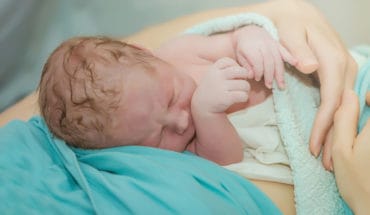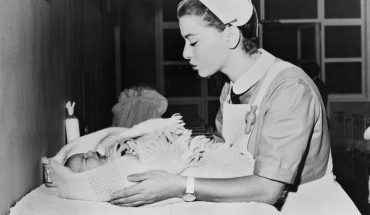New test to screen newborns for rare genetic disorders paves the way for earlier diagnosis and treatment. A newly developed test to screen for three rare genetic disorders simultaneously in newborns was feasible, reliable and scalable, according to a new study.
The study, published in The Journal of the American Medical Association Network Open, was the first to validate the use of a low-cost, specialised screening method called Methylation Specific-Quantitative Melt Analysis (MS-QMA), developed by MCRI researchers, for these disorders at a large scale.
The one-step test can be used to screen for the three conditions simultaneously, by looking at the number of chemical modifications or marks called methylation added to affected genes, which are not present at such high or low levels in children without these disorders.
The study first checked for accuracy, with the test correctly distinguishing most of the 167 samples from people who had one of the disorders. It was then tested on 16,579 newborns in Victoria with the test identifying two with Prader Willi, two with Angelman and one with Dup15q.
The three rare disorders are characterised by varying degrees of intellectual disability, autism, behavioural problems, seizures and/or severe obesity. About 135 babies are born with one of these disorders each year in Australia, but the disorders are not included in newborn screening programs, and many go undiagnosed in the first year of life.
MCRI Associate Professor David Godler said a key reason why these disorders were not included in current newborn screening programs was the lack of a test with low laboratory costs that could work at a population scale.
“Tests are currently only performed on those suspected of having these disorders, and only if features are recognised by a child’s doctor, and subsequently referred for appropriate testing,” he said. “This is not the case with newborn screening where testing is performed on all newborns before symptoms become apparent.”
Associate Professor Godler said the study found the cost, disorder prevalence and accuracy of MS-QMA as a first-tier test were in line with other conditions currently included in newborn screening programs.
The study reported that in the 16,579 newborns screened, the probability of those with a positive screening test, truly having the disease using MS-QMA, was 67 per cent, 33 per cent and 44 per cent for Angelman, Prader Willi and combined detection of chromosome 15 imprinting disorders, respectively.
“Having a high positive predictive value is important for newborn screening as it ensures that there is lower number of false-positive results that need to be repeated, leading to lower overall laboratory costs, less work for maternity services in obtaining a repeated blood sample and minimises the psychological effect on families,” Associate Professor Godler said.
MCRI Professor David Amor said that if these findings were replicated in future independent studies, adding these chromosome 15 imprinting disorders to newborn screening programs would allow for earlier diagnosis and using targeted interventions as they emerge, such as gene therapy for Angelman syndrome.
“For Prader Willi, diagnosis in infancy allows for early initiation of growth hormone treatment to improve long term health outcomes,” he said. “For Angelman and Dup15q, most infants do not receive an early diagnosis that would allow intervention in the first year of life. But such early diagnosis, if available through newborn screening, could prevent the diagnostic odyssey, reduce medical costs and the significant stress and anxiety currently experienced by the families while they await a diagnosis.”
Chrissy Cimino’s son Elliott, 4, was diagnosed with Angelman syndrome at 14 months.
As a baby, Elliott couldn’t sit upright, never cried or babbled and struggled to put on weight. After searching for a diagnosis for months, Chrissy said she was relieved to finally have the answer.
“There were a lot of red flags that were missed, and I knew in my gut that something wasn’t right,” she said. I kept persisting with medical appointments and I did my own research. It was such a relief to have that diagnosis so we could finally start medical interventions.”
But Chrissy said if Elliott had been diagnosed through a newborn screening program, his motor and cognitive skills wouldn’t be as poor.
“We couldn’t get him on the NDIS until he was two and a half so we missed out on years of intensive physio and speech and occupational therapies. He is almost five and he still isn’t walking. If he was diagnosed earlier we could have helped him a lot sooner.”
Doris Hamilton-Brown’s son Lewis, 2, was diagnosed with Prader Willi at four weeks of age.
Doris said due to being born small for gestational age, Lewis was taken to the neonatal unit but failed to improve.
“After Lewis failed to get better the doctors started to look at genetic reasons,” she said. “The diagnosis was unexpected and tough to hear but getting answers meant we could intervene early.”
Lewis started growth hormone treatment at seven months, which will help with muscle bulk, reduce fat mass, increase physical activity levels and improve attainment of developmental and cognitive milestones.
“He has just started walking and while he is non-verbal he can understand verbal cues and communicate what he needs,” Doris said.
She said having a test for Prader Willi and other chromosome 15 imprinting disorders on newborn screening programs would remove a lot of angst, guilt and uncertainty for parents.
“We were lucky that Lewis was able to start treatments and therapies fairly early on but for many families, the diagnosis can come late and intervention is delayed,” Doris said.
Researchers from The Royal Children’s Hospital, the University of Melbourne, E.D.G. Innovations and Consulting, Hunter Genetics, University of Kansas Medical Centre, University of Padua, Città della Speranza, Greenwood Genetic Center, University of Chile and the Victorian Clinical Genetics Services also contributed to the study.
Publication: David E Godler, Ling Ling, Dinusha Gamage, Emma K Baker, Minh Bui, Michael J Field, Carolyn Rogers, Merlin G. Butler, Alessandra Murgia, Emanuela Leonardi, Roberta Polli, Charles E Schwartz, Cindy D Skinner, Angelica M. Alliende, Lorena Santa Maria, James Pitt, Ronda Greaves, David Francis, Ralph Oertel, Min Wang, Cas Simons and David J Amor. ‘Feasibility of Screening for Chromosome 15 Imprinting Disorders in 16,579 Newborns Utilizing a Novel Genomic Workflow,’ The Journal of the American Medical Association. DOI: 10.1001/jamanetworkopen.2021.41911
*The content of this communication is the sole responsibility of MCRI and does not reflect the views of the NHMRC.
About MCRI
The Murdoch Children’s Research Institute (MCRI) is the largest child health research institute in Australia committed to making discoveries and developing treatments to improve child and adolescent health in Australia and around the world. They are pioneering new treatments, trialling better vaccines and improving ways of diagnosing and helping sick babies, children and adolescents. It is one of the only research institutes in Australia to offer genetic testing to find answers for families of children with previously undiagnosed conditions.
Funding:
The study was supported by the Victorian Government’s Operational Infrastructure Support Program, with the salaries supported by NHMRC project grants (no. 1049299 and no. 1103389 to D.E.G.); Murdoch Children’s Research Institute, The Royal Children’s Hospital Foundation (to D.E.G.); Next Generation Clinical Researchers Program – Career Development Fellowship, funded by the Medical Research Future Fund (MRF1141334 to D.E.G.); the Financial Markets Foundation for Children (Australia; no. 2017 – 361 to D.E.G. and D.J.A.); the Genetics of Learning Disability (GOLD) Service (M.F.); the Foundation for Prader-Willi Syndrome Research, USA (grant no. 43445 and no. 501393 to D.E.G., and D.J.A.); the Angelman Syndrome Foundation (to DEG), Victorian Medical Research Acceleration Fund (to D.E.G) and joint funding from the Prader-Willi Syndrome Association (Australia), Foundation for Angelman Syndrome Therapeutics (Australia) and Dup15q Australia Ltd. Supported, in part, by a grant from the South Carolina Department of Disabilities and Special Needs (to C.E.S.).
- Gut microbiome could delay onset of type 1 diabetes - 3rd April 2025
- The da Vinci 5 Robot Is Set To Transform Bariatric Care: - 31st March 2025
- Beyond money: the hidden drivers fuelling child food insecurity - 31st March 2025






